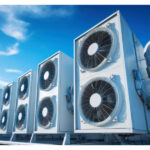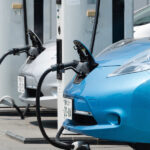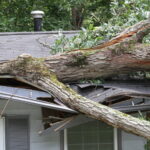In the realm of commercial buildings, the durability and efficiency of roofing systems play a critical role in maintaining structural integrity and operational continuity. This article delves into the strategic importance of roof replacement and the pivotal role of advanced commercial roofing systems in achieving enhanced performance and longevity.
Importance of Roof Replacement
1. Structural Integrity and Safety
Commercial buildings are subjected to constant wear and tear from weather elements such as rain, snow, and UV radiation. Over time, these factors can compromise the integrity of roofing materials, leading to leaks, cracks, and potential structural damage. Roof replacement becomes essential to maintain safety standards and protect the building’s occupants and assets.
2. Energy Efficiency
Older roofing systems may lack modern energy-efficient features such as improved insulation and reflective coatings. As a result, they contribute to higher energy consumption and costs. By investing in roof replacement with energy-efficient materials and designs, commercial property owners can significantly reduce heating and cooling expenses, thereby enhancing overall operational efficiency.
3. Compliance with Building Codes and Standards
Building codes evolve to ensure buildings meet contemporary safety and environmental standards. Outdated roofing systems may not comply with current regulations, posing legal and financial risks. Roof replacement allows property owners to align with updated codes, ensuring compliance and avoiding potential penalties.
Evolution of Commercial Roofing Systems
1. Advanced Materials and Technologies
Modern commercial roofing systems leverage advanced materials such as thermoplastic polyolefin (TPO), ethylene propylene diene terpolymer (EPDM), and modified bitumen. These materials offer superior durability, weather resistance, and flexibility compared to traditional options like asphalt and gravel. They are designed to withstand harsh environmental conditions and provide long-term performance benefits.
2. Sustainable Practices
Increasingly, commercial roofing systems incorporate sustainable practices such as recyclable materials, cool roofs, and green roofing solutions. These initiatives reduce environmental impact, enhance energy efficiency, and contribute to corporate sustainability goals. Roof replacement presents an opportunity for businesses to adopt these practices, thereby demonstrating environmental stewardship and reducing their carbon footprint.
3. Technological Advancements
Integration of technology in commercial roofing systems has revolutionized maintenance and performance monitoring. IoT (Internet of Things) devices can monitor roof conditions in real-time, detecting potential issues such as leaks or damage promptly. This proactive approach minimizes downtime and repair costs, ensuring uninterrupted business operations.
Maximizing Benefits through Strategic Roof Replacement
1. Lifecycle Cost Analysis
While initial costs may be higher for advanced commercial roofing systems, their extended lifespan and reduced maintenance requirements often result in lower lifecycle costs compared to traditional options. Conducting a thorough cost analysis helps property owners make informed decisions that align with their long-term financial objectives.
2. Customized Solutions for Diverse Needs
Every commercial building has unique requirements based on factors like climate, building use, and budget. Roof replacement projects should be customized to address these specific needs, incorporating appropriate materials, designs, and maintenance plans. Collaboration with experienced roofing professionals ensures optimal outcomes tailored to the building’s characteristics.
3. Enhancing Property Value
A well-maintained and energy-efficient roofing system enhances the overall value of commercial properties. Potential buyers and tenants recognize the importance of sustainable and durable infrastructure, making properties with upgraded roofing systems more attractive in the competitive real estate market.
Conclusion
The intersection of roof replacement and commercial roofing systems represents a pivotal opportunity for property owners to enhance durability, efficiency, and sustainability. By investing in advanced materials, leveraging technological innovations, and embracing sustainable practices, businesses can achieve long-term benefits that extend beyond immediate cost savings. Strategic planning and collaboration with roofing experts are essential in navigating the complexities of roof replacement projects, ensuring optimal results that align with both operational goals and environmental responsibilities.
In summary, prioritizing roof replacement with modern commercial roofing systems not only safeguards structural integrity and compliance but also fosters a productive and sustainable environment for commercial enterprises to thrive in the years ahead.










